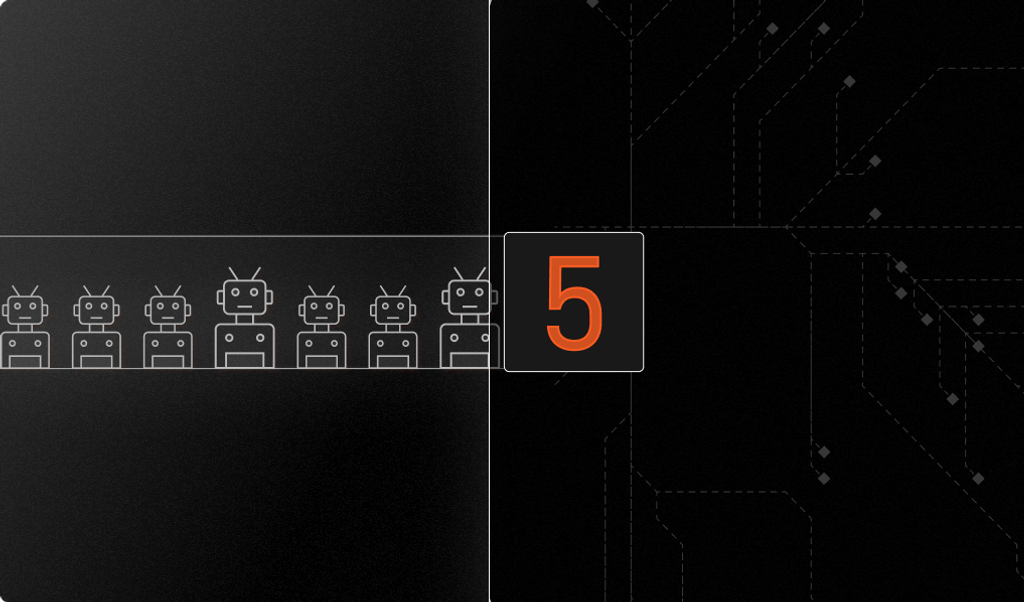
Summarize this article with
You might think that bots are harmless, but many wild exploits start with bots scanning your applications, finding a vulnerability, and automatically exploiting it. Bots are also used to find vulnerable user accounts with stolen credentials or accounts using weak passwords. Without bot mitigation, your application and users could be susceptible to exploits that happen in seconds with sophisticated bot activity.
Some bots are good, such as search engine bots. Good bot mitigation must differentiate between a good bot and a bad one and immediately block the bad bot from performing any malicious actions. False positives can affect the performance and stability of your application, so it’s not enough to block all bot activity on your website. Instead, you must find technology that can differentiate between good and bad bots.
What is bot mitigation?
Bot mitigation is a process to detect malicious bots and protect websites from their activities. It identifies suspicious behavior and then blocks it before any damage can be done. For example, if a robot visits your website repeatedly, it could indicate a potential attack. Bots are used to steal data or compromise an application allowing unauthorized access to sensitive information. Good bot strategies protect from malicious threats and safeguard customer and corporate data.
What can a bot do?
When designing a cybersecurity strategy, most developers look for ways to stop human attackers, but many of today’s common threats start with bot scanning. The attacker writes scripts to scan for vulnerabilities and automatically exploits them or will use downloaded software to scan for vulnerabilities. Using bots, an attacker can find vulnerabilities in hundreds of sites rather than scanning them manually one by one.
Depending on the attacker’s motives, a bot can:
- Buy products with limited availability to scalp and price gouge.
- Flood a site with malicious traffic, exhausting server resources so legitimate users cannot use the application (i.e., denial of service).
- Authenticate into user accounts, identifying account takeover opportunities.
- Order products automatically with stolen credit cards.
- Place bets on gambling sites, usually against the site’s terms of service.
- Spam inappropriate comments on site blogs or forums.
Methods for mitigating bots
The way you mitigate bots depends on your application. You also have options for the way you handle bot detection. For example, some applications return a 503 server error when a bot is detected. Others block user authentication attempts or throttle usage. Developers work with several technologies to differentiate between a bot and a user.
It’s a delicate balance between stopping bots and making it easy for users to interact with an application. Aggressive mitigation techniques that interfere with user experience can harm customer retention and run off your user base, so developers should use strategies that make bot detection and monitoring seamless from user interactions with the application.
Here are a few ways developers can mitigate bot activity:
CAPTCHAs
- During authentication or signup of new accounts, add a word or picture puzzle that requires human interaction to continue. CAPTCHAs are also used when too many failed authentication attempts are sent for a specific username.
IP blacklists:
- Bot authors use IPs commonly used in blackhat activity, and applications can use blacklists to block them automatically. This strategy could also block legitimate users, so a better method is blacklisting IPs for a short amount of time when they make too many requests in a short period.
Device fingerprinting
- Some bots emulate smartphone traffic, and users performing malicious activity can be identified using device fingerprinting. The application assigns an ID to a user on a specific device and can associate any suspicious activity to the ID. Once marked as malicious, the application blocks further requests from the fingerprinted device.
Incorporate a Web Application Firewall (WAF)
- WAF integration stops malicious input such as cross-site scripting (XSS) or SQL injection (SQLi), which is common in botted exploits and scanning for vulnerabilities. Using a WAF, any bot sending malicious code in POST requests will be rejected automatically.
User-agent header analysis
- Poorly written bots use no user-agent, and it’s a good starting point for bot detection. Note that rejecting traffic with no user-agent header should not be the only method for bot mitigation because user-agent headers can be spoofed. Usually, user-agent analysis is combined with device fingerprinting for more accurate bot detection.
Choosing a bot mitigation strategy
Most application developers use more than one strategy to detect bots because one strategy is not enough to stop sophisticated attacks. The most effective strategy is device fingerprinting, which incorporates several factors to create a unique ID to identify a user. Any legitimate user can work with the application without any hurdles. Still, a malicious user will get automatically throttled. The system will lock errors thrown during requests or their account. Poor strategies can increase customer service activity, frustrate users, and cause customer churn. No strategy should interfere with user experience.
CAPTCHAs are an excellent start to limit bot activity against user account creation and authentication, but they should not be the only solution. Malicious bots can make several requests every second on other pages of your application, causing performance degradation for legitimate users. The best strategy is to work with fingerprinting applications that allow developers to handle malicious traffic as they see fit, usually, methods that follow business requirements. For example, a financial institution might flag a user account, trigger fraud detection, and alert fraud analysts for further review during suspicious activity. However, a site with no money being transferred might throttle requests.
Fingerprinting libraries allow developers to integrate bot detection into their applications and give them the flexibility to redirect or block traffic based on business requirements. The Fingerprint library can be incorporated into developer applications using a few lines of code, and bot detection starts instantly. An ID is given to a specific user, and developers can work with our advanced technology without the massive overhead of building your bot detection modules.
Any bot detection software you use should continually update as new bypasses are developed. The bot software developers should actively update and patch their applications to keep up with the latest cybersecurity trends; specifically, bot technology changes and bypasses to avoid detection.
Fingerprint offers bot detection that can be integrated into your applications, and we continually update our library code to account for any malicious bot changes. Our advanced technology creates a unique identification value for every visitor and lets developers identify them with only a few lines of code. We handle the complex system of identifying malicious activity and let you determine what to do with a malicious actor.
To get started, contact us to find out how Fingerprint can help you stop fraud, block malicious bots, and safeguard your customer data.



